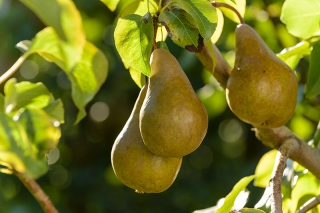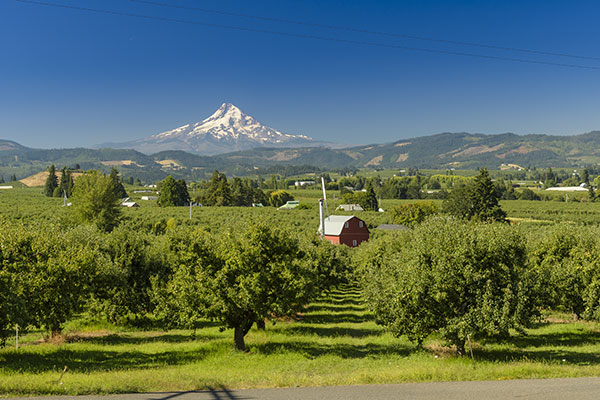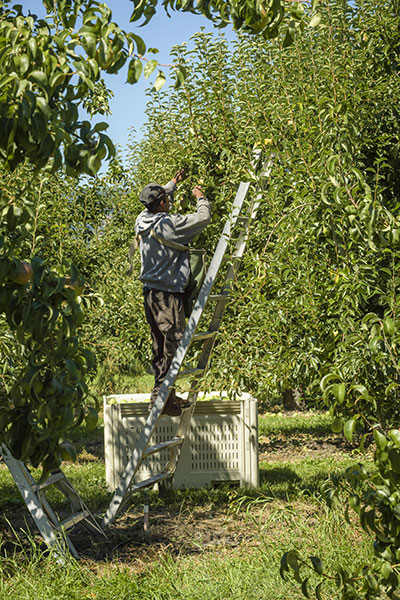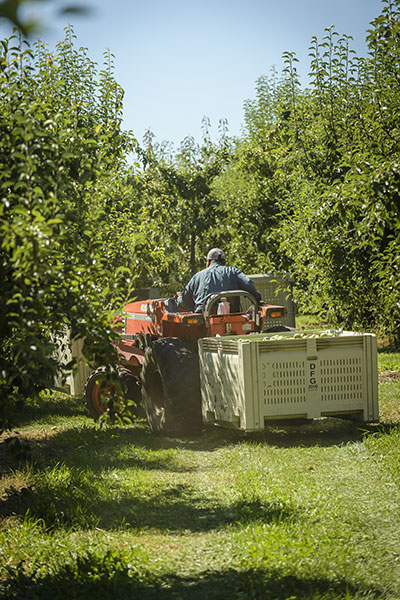
To Prepare a Pear
27 February 2018The benefits of volcanic ash soil, sun and mountain streams are revealed in delicious pears from fresh Anjou to the peeled, poached and canned Bartlett.
By Thomas Smith

You might not think a volcanic desert climate would be the best place to grow fruit. However, pears thrive in Washington State’s Wenatchee River Valley, where they enjoy 200 days of sun a year and soil enriched by volcanic ash. In fact, the unique combination of fertile ash-soil, warm days, cool nights, and mountain streams make the rolling valleys of the Pacific northwest the perfect place for pears to thrive.
Ray Schmitten, pear farmer from Cashmere, Wash., said his family has been in the Wenatchee River Valley area for 115 years. Schmitten’s farm, Pine Shadow Ranch, primarily grows the Red Anjou and Green Anjou varieties of pears, but also produces Bartlett, Bosc and Starkrimson. “A pear from Pine Shadow Ranch is steeped in tradition,” Schmitten said. “My wife and I have raised four boys on our farm and we love to share our product with the world.”
Pine Shadow Ranch is in the foothills of the Cascade Mountain Range and is managed by Schmitten Orchards, Inc. Schmitten’s orchards stretch for about 500 acres and contain roughly 6,000 trees. Despite the size of the orchards, each pear is still cared for and picked by hand.

“Tree fruit agriculture is dependent on a lot of hand labor,” the grower continued. “Opportunities abound for our friends that have immigrated from other countries to harvest our fruit, but labor costs are becoming our biggest cost and it is becoming a limiting factor.” Schmitten said he thinks a workable guest worker system would benefit US pear growers.
Washington and Oregon together produce over 80 percent of all US pears, and Washington is the number one state in pear production. About 390,000 tons of fresh pears are produced annually, although one fourth of any given pear harvest is canned. Commercially canned pears produce the same result as canning at home: a can of well-preserved, peeled and poached pears with no additives or preservatives. This allows for the sweet, juicy fruit to be consumed year-round.

Out of the 10 pear varieties, Bartlett pears are the only commercially canned variety with 63 percent of the bounty being processed. “Bartletts are a summer pear,” Schmitten said. “They ripen easily and uniformly, lending themselves to canning with ease.” Only five percent of pears from Pine Shadow Ranch are canned.
Schmitten said he personally likes Anjou pears best. “Ripened to a sweet buttery texture like you would ripen an avocado. I slice them up and share them with family. They’re good with cheese, hard salami, almond butter, or just by themselves.”
Dieticians recommend consuming at least one cup of fruit every day and one pear accounts for half of that daily intake. Pears are also sodium free, high in vitamin C, and contain roughly six healthy grams of fiber. The pear’s skin is especially high in fiber and lends its crisp rough texture to any pear-based dish.
To tell if a pear is ripe, press gently into the neck of the pear, the narrow top where the stem is attached. If the neck yields to gentle pressure, the pear is ripe and ready to eat. Schmitten said, “It’s best to put pears in the refrigerator to store and be consumed over the next month or so once they are ripe.”
Schmitten concluded by saying he wanted consumers to, “Enjoy our industry's organic and conventionally grown pears. They are both safe and delicious. Ripen them properly and you will be rewarded.”
